Speed up Your Results With HIIT Training
Posted by Jonathan Packard on January 31, 2024
It’s February and the gym is more active than ever. Everybody is wanting to lose weight and get in shape while resolutions are fresh and motivation is high. But while “lose weight” is one of the most common New Year's resolutions, most people don’t actually care about losing weight or what the scale says. They simply want to look better and feel stronger.
When most people think of weight loss, or start an exercise program with weight loss in mind - they usually head straight for cardio: walking, running, swimming, biking etc. While most cardio programs advocate for slow, steady state cardio - we all know that usually doesn’t produce the results we are looking for. Cardio doesn’t necessarily burn fat, cardio burns calories.
Not all cardio is the same either: think of an Olympic marathon runner body and then compare that to the body of an Olympic sprinter. Why is it that the sprinter, who undoubtedly has logged far less cardio time than the marathon runner, has a stronger and more fit physique? The marathon runner might “weigh less”, but most people are pursuing the physique over the scale.
Sprinting falls into the HIIT (High Intensity Interval Training) category of exercise. Many different models of HIIT are out there but they are all built on the same principles: maximal intensity for a short amount of time, a longer rest period, then repeat. The key to high intensity is truly going “all out”. To claim all the benefits of HIIT workouts, your heart rate must be >85% max during your work periods.
So, what exactly are the benefits of HIIT and why should you consider adding it to your training regime?
HIIT produces notable weight loss (predominantly fat loss), increased cardio capacity and VO2 max, increased insulin sensitivity, optimized cholesterol levels, lower blood pressure, increased muscle mass, increased strength, and appetite suppression to name a few.
Just how does HIIT do all these things? The answer might surprise you: hormones. When you go ‘all out’ and sprint or give maximal effort in an exercise your body’s sympathetic nervous system engages (fight or flight) and releases a burst of hormones in your body such as epinephrine, norepinephrine, cortisol, and growth hormone.
Some studies found that the body's catecholamines (epinephrine/norepinephrine) had increased blood plasma levels as high as 6-14x above baseline. Other studies found that after a single 30 second sprint, growth hormone levels were still 10x above baseline levels an hour after exercise. While growth hormone has many beneficial effects on the body; catecholamines, especially epinephrine, drive lipolysis and release fat stores from both the abdomen and subcutaneous stores to be used as fuel (S. Boutcher 2011).
The most commonly studied HIIT protocol is “The Wingate Test” in which subjects give maximal exertion on a resistance modified bicycle (almost like an assault bike) for 30 seconds, followed by a 4 minute rest period - repeated 4-6 times. The Wingate is very strenuous in nature. The average person cannot give ‘maximal effort’ or truly sprint for 30 full seconds multiple times. This is why a HIIT workout is significantly shorter, usually less than 5 minutes of total sprinting or maximal exertion time combined.
Other HIIT protocols are 8 second sprint, 12 second rest, repeated for 20 minutes. Some prescribe 10 second sprint, 30 second slow but continued movement. The general rule of thumb is <30 seconds of maximal intensity with a work to rest ratio of 1:2 or 1:3. The goal is to repeatedly spike the heart rate and cause hormones to surge, without giving sufficient breaks that would let the heart rate fully return to resting levels.
HIIT protocols can be applied to running, biking, swimming, bodyweight circuit exercise and even some resistance training movements. There is a lot of flexibility when designing a HIIT program and individuals can tailor it to exercises they enjoy or their preferred cardio method.
In addition to the hormone surges during HIIT workouts, one of the main benefits provided comes from the long lasting “afterburn” effect. During maximal intensity exercise, the body cannot keep up with oxygen demands and transitions from aerobic exercise (with oxygen) into anaerobic exercise (without oxygen). While recovering from intense exercise, the body is in an oxygen deficit phase called excess postexercise oxygen consumption (EPOC).
During the EPOC or ‘afterburn’ the body is working hard to remove the built-up lactic acid and restore body oxygen and glycogen stores, and this period of time has increased metabolism and prolonged ‘calorie burn’ from the subject’s baseline. So, during HIIT you get an incredible workout, and then your body gets a prolonged slow ‘burn’ for hours after while you’re recovering. This is why HIIT has been called “the ideal workout for losing weight” (I. Janssen et al. 2002).
When comparing studies head-to-head, HIIT beats out steady state cardio every time. Studies are often comparing 30-60 minutes of jogging or biking (steady state cardio at mild-moderate intensity) 3-5 times per week, to a HIIT workout lasting 20 minutes or less on 3 days per week, with less than 5 minutes of maximal exertion exercise time combined - and the HIIT workout wins every time. Often it has double the fat loss, and always has increased muscle gain compared to steady state cardio.
A huge part of HIIT’s appeal is the results you see with less time spent exercising. Everyone is busy. Who has time to spend hours on the treadmill or stationary bike per week? HIIT is perfect for people who want to see results and may only have 30 minutes or less to devote to exercise. If you are wondering if HIIT training is appropriate for you, or how you might implement a training plan, please contact one of our RAC personal trainers.
References:
High-Intensity Intermittent Exercise and Fat Loss - S. Boutcher 2011
High-Intensity Interval Training: The Ultimate Guide - Bodybuilding.com
High-Intensity Circuit Training Using Body Weight - B. Klika, C. Jordan 2013
What Is The Best HIIT Workout? (bodybuilding.com) - Bodybuilding.com
Effect of High Intensity Interval Training (HIIT) On Weight, Body Mass Index and Body Fat Percentage for Adults - Ayman Shehata, Islam Mahmoud 2018

Jonathan Packard
Jonathan Packard is from Knoxville TN, and moved to Rochester in 2021. He is an Emergency Medicine PA and is getting his start in the fitness industry as a Personal Trainer at the RAC. In his free time, he enjoys mountain biking, hiking, archery, wood working, projects around the house and spending time with his family.
Contact Jonathan Packard



